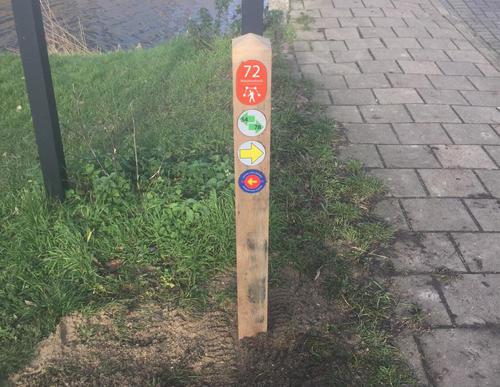Amsterdam Amstel Station Starting Point

Routes from this starting point
-
Amstel Riverbank Path (blue)
Unpaved path (partly) - 6.07km
-
Frankendaelroute (orange)
Unpaved path (partly) - 7.43km
Two Dutch landscapes come together at Amsterdam Amstel station: the peat river and the reclaimed land. The Watergraafsmeer was drained in 1629 and again after a dike breach in 1651. The polder remained virtually undeveloped for the following three hundred years. Two railway lines crossed the empty land: the Gooische Stoomtram (steam tram) via the Middenweg and the Oosterspoorweg. Wealthy Amsterdam residents had their country houses built in the Meer, of which Frankendael is a good example. The appearance of the river landscape has changed much less over the last four centuries, which means that there are two very different walks departing from Amstel station.
- The Amsteloeverpad or Amstel Riverbank Path (blue) passes through the Martin Luther Kingpark on the west bank. The route then follows the towpath along the waterfront and passes the Zorgvlied cemetery. Cross the Amstel along the A10 via the Rozenoordbrug. The eastern bank has nice paths through the young Oeverbos park and finally you follow the Korte Oudekerkerkerdijk, the part of the dike where the river is at its widest.
- The Frankendaelroute (orange) runs a long way over the high ring dike around the deep Watergraafsmeer (5 metres below sea level). On the south side lies the Weespertrekvaart canal. You walk through Betondorp, known for our national football hero Johan Cruijff, and pass the site of the former Ajax stadium. A few surprising paths on the edge of the sports park take you to the old country estate of Frankendael, which became a park only after the closure of the Stadskwekerij (city nursery) in 1998.

